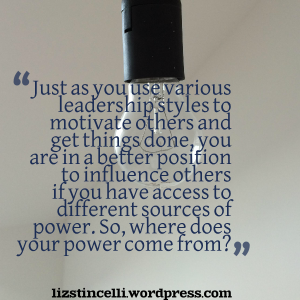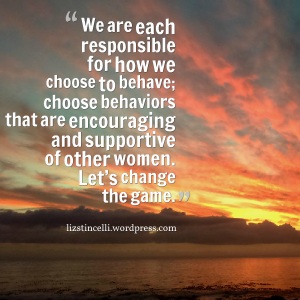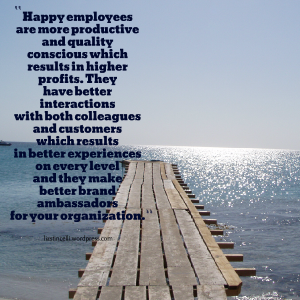 “Innovation has nothing to do with how many R&D dollars you have. When Apple came up with the Mac, IBM was spending at least 100 times more on R&D. It’s not about money. It’s about the people you have, how you’re led, and how much you get it.” —Steve Jobs
“Innovation has nothing to do with how many R&D dollars you have. When Apple came up with the Mac, IBM was spending at least 100 times more on R&D. It’s not about money. It’s about the people you have, how you’re led, and how much you get it.” —Steve Jobs
By Elizabeth Stincelli, DM
Innovation and the Leadership Pyramid
How is innovation dependent on the leadership pyramid for the support and connections necessary for success? Innovation needs the abilities and resources that those in a position of authority have to support creativity and the implementation of innovation throughout the organization. The access that leaders have to information, influence, and resources is essential to the process of innovation.
Innovation needs support and an organizational climate focused on excellence in order to be successful. For innovation to occur, team members must be able and willing to cooperate in the development and application of new ideas. The foundation needed to provide the resources and support for the collaboration that enables innovation must be provided by leadership. So, how can your leadership support innovation?
See through the informational noise
Efforts to innovate should be associated with a clear purpose, outlined objectives, and a shared vision. This clarity and direction from leaders guides innovative efforts in a direction that will provide value to organizational goals. To be successful, innovative efforts should be informed by organizational and market data and information. The vast amounts of available data can overwhelm those trying to sort through it. Leaders often have historical experience with the information which allows them to sort through the noise and identify the key information to support innovative efforts more easily.
Successful innovation requires that a diverse group of people be brought together and encouraged to share information and participate in the process of innovation. Organizational leaders have the authority to determine which individuals participate and what information is shared. Those in a leadership position often have the big picture understanding that is useful in determining who should participate and what information will be beneficial to innovative efforts.
Leaders must manage the knowledge resources of the organization. To successfully innovate, one needs access to accurate information, the capability to connect the informational dots, and the ability to filter pertinent from arbitrary information. Leaders have access to the data and resources necessary to help innovators see through the informational noise
The ability to execute
The end goal of innovation is execution. It is the responsibility of the leader to decide which projects are right for implementation. Successful innovation can only take place when leaders design organizational processes that support innovation and the implementation of new ideas. Leaders also have the ability to support learning from failed attempts to implement innovative ideas rather than instilling a fear of failure.
For innovative ideas to be successful, leaders must provide the practical support for implementation. They must supply the necessary resources to test new ideas. Leaders must manage the people, time, knowledge, and resources allocated to innovative efforts and implementation. Leaders have the authority and resources necessary to execute on innovative ideas.
Build a culture that supports innovation
A culture that supports innovation provides a safe place to experiment, to fail, and to learn. It must emphasize collaboration and the continual pursuit of excellence. The leader must provide the support and climate that encourages creativity and curiosity that facilitates innovation. The responsibility for developing a high-performance, innovative culture falls on organizational leaders.
A culture that supports knowledge sharing and collaborative work practices increases innovation. This type of culture eliminates silos and supports ongoing, open communication. It gives people the opportunity to collaborate by providing permission, time, and resources. An innovative culture rewards the sharing of ideas and knowledge. Successful innovation is encouraged when learning becomes entrenched in the culture.
People must feel safe to make mistakes and then talk about them openly so others can learn from them. An organization that supports successful innovation has a culture where shared decision-making, experimenting, learning, and development are emphasized. Developing a culture that supports learning and diversity has an innovative competitive advantage. This type of culture allows innovation to grow from shared experiences and differing conceptual lenses. Leaders have the influence necessary to build a culture that supports innovation.
Collaboration not competition
Organizational leadership should support innovative collaboration over a mindset of competition. Collaboration requires the sharing and exploration of knowledge across departments, roles, and regions. The contribution of diverse expertise enhances organizational learning, the creation of knowledge, and complex problem-solving. Competition can stifle the ability to share and build on the knowledge and experiences of others. While competition may offer the short-term satisfaction of a personal victory, the satisfaction gleaned from collaborative success can be long-lasting.
Organizational policies should not be overly restrictive in the access that is allowed to pertinent data. Policies should not foster a culture that encourages secrecy and internal competition. Collaboration should challenge ideas in a positive, co-creative way. An important factor in innovation is the support of leadership in encouraging team diversity and the sharing of information to enhance creativity and problem-solving through collaborative efforts rather than competition. Leaders have the influence to set the climate of innovation as collaborative rather than competitive.
Conclusion
Successful innovation is dependent on the data, resources, authority, and influence that leaders can provide. Individuals in a position of authority have the ability to see through the informational noise, execute on ideas, build a supportive culture, and encourage collaboration rather than competition. Become the leader who provides the direction, support, influence, and resources necessary for successful innovation in your organization.
© 2015 Elizabeth Stincelli
Liz Stincelli is passionate about recognizing and inspiring the leader in each of us. She is the CEO of Stincelli Advisors where she focuses on helping organizations engage employees and improve organizational culture. Liz holds a Doctor of Management degree with an emphasis on organizational leadership.
Learn more about Liz by visiting her website, stincelliadvisors.com and connect with her on Twitter @infinitestin, Google+, and LinkedIn. You can contact her by email at stincelliadvisors@gmail.com.








